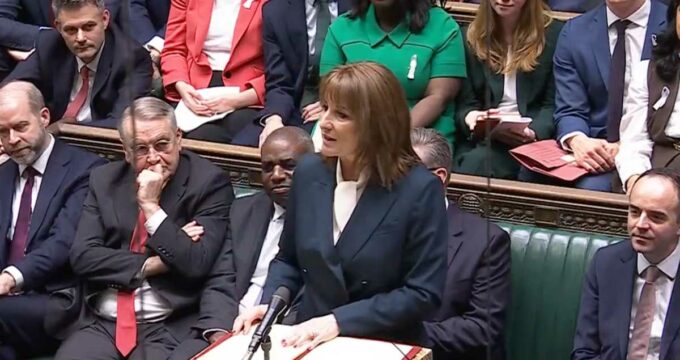Taiwan looks south for foreign enrolment growth
Like the US, Australia, the UK, Japan, and Canada – as well as other leading study abroad destinations –Taiwan is highly dependent on Chinese enrolments as a proportion of its international student population. So when in 2017, the Chinese government announced that it would decrease the admission quota for new Chinese undergraduate students in Taiwan from 2,136 in the last academic year to only 1,000 for 2017/18, it came as a blow to Taiwan’s goal to increase international student numbers to 58,000 by 2019. The announcement occurred in a context of rising political tension between Taiwan and China, and it – along with other moves by China to pressure Taiwan economically for its government’s insistence on independence from China – has naturally required the Taiwanese to look elsewhere for partners and alliances in order to keep its economy thriving. Even so, nearly a third of Taiwan’s exports have gone to China in recent years.
The New Southbound Policy
In 2016, the Taiwanese government developed a “New Southbound Policy,” which involves pursuing closer economic and cultural ties with ASEAN countries (Indonesia, Malaysia, the Philippines, Singapore, Thailand, Brunei, Cambodia, Laos, Myanmar, and Vietnam), certain South Asian countries, and Australia and New Zealand. Taiwan is looking to bolster some industries in particular, with agriculture, tourism, and innovation-based industries (including education) the main priorities. The policy’s ultimate goal is to brand Taiwan as eager and able to cooperate across multiple platforms with regional players, and its initiatives are not only targeted, as in the case of international education, but also broadly welcoming in general. Examples include a bookstore designed to make Asian migrants feel welcome in Taiwan; new immigrant centres aimed at speeding up integration into Taiwanese society; and local celebrations of various Asian culinary, musical, and artistic traditions. Summer camps for students within the region are also part of the plan, illustrating the Taiwanese government’s recognition that if the camps’ young attendees enjoy their short-stay experiences in Taiwan, they are more likely to think of Taiwan when they are ready for higher education. The Taiwanese government has earmarked a substantial portion of the New Southbound Policy’s budget for its international education sector: NT$430 million (US$14.1 million) per year until 2020 will fund projects created by individual universities and businesses to internationalise campuses and create deep links with Southbound target countries. Reuters reports that, “The policy features new initiatives, including visa-free travel for visitors from several countries, scholarships and internships for overseas students, and a plan to train 1,000 doctors in Taiwan over a four-year period.” Further, Reuters notes that,
“The push has already seen some success. Taiwan exports to 18 southbound countries grew their fastest in five years, up 13.5% in the first half of 2017. The number of students from southbound countries to Taiwan rose 9.7% in the 2016 academic year [to 31,530 students] versus the previous year [when 28,740 were enrolled], while southbound tourist visits climbed 36.7% in the first half.”
According to the Taipei Times, examples of some of the scholarships on offer to Southbound countries include:
- The Ministry of Education’s Taiwan Scholarship – which waives tuition and fees on top of a monthly stipend of NT$15,000 for undergraduate students;
- The Huayu Enrichment Scholarship – a monthly stipend of NT$25,000 for Mandarin learning;
- The MOST Taiwan Scholarship, a monthly stipend of NT$30,000 for master’s or doctoral degrees offered by the Ministry of Science and Technology;
- The Ministry of Foreign Affairs Scholarship, a monthly stipend of NT$30,000 for degree programmes;
- The International Cooperation and Development Fund’s International Higher Education Scholarship Program, a monthly stipend of NT$12,000 toward undergraduate studies.
The goal going forward is to increase the number of students from ASEAN and South Asian countries by 20% each year.
Support for the policy and an important victory
Recent polls suggest that more than 80% of the Taiwanese population supports the New Southbound Policy, which represents overwhelming popular support for a strategy aimed at reducing the country’s heavy reliance on Chinese export markets. President Tsai Ing-wen has stated,
“Taiwan must play an even more active and prominent role in order to participate in the future of the region. Redefining Taiwan’s role in the region is one of my highest priorities as president.”
That December, Taiwan celebrated the New Southbound Policy’s biggest success to date: a renewed and expanded investment deal with the Philippines. According to The Diplomat, Taiwan hopes to sign such agreements with India, Indonesia, Malaysia, Thailand, and Vietnam, but it will be interesting to see how China reacts. As The Taiwan News reports, “China’s government filed a protest to the Philippines to try and convince it to abort the agreement at the last minute.” The Diplomat continues:
“On December 8, the day after the deal was signed, China’s foreign ministry expressed ‘grave concern’ over the new Taiwan-Philippine agreements.
Spokesperson Geng Shuang told reporters that ‘China sees no objection to a country that has diplomatic ties with China conducting normal economic, trade and people-to-people exchanges with Taiwan, but does firmly oppose … any form of official engagement or signing any agreement or cooperation document with sovereign implication.’”
Last spring, John Chen, the representative of Taiwan’s economic and trade office in Indonesia, told the Financial Times that political pressure from Beijing is a constant problem and being excluded by China from regional economic integration agreements is a “great challenge.” But fair to say it is a challenge that Taiwan must meet in order to protect its future and continue its economic growth. For additional background, please see:
















